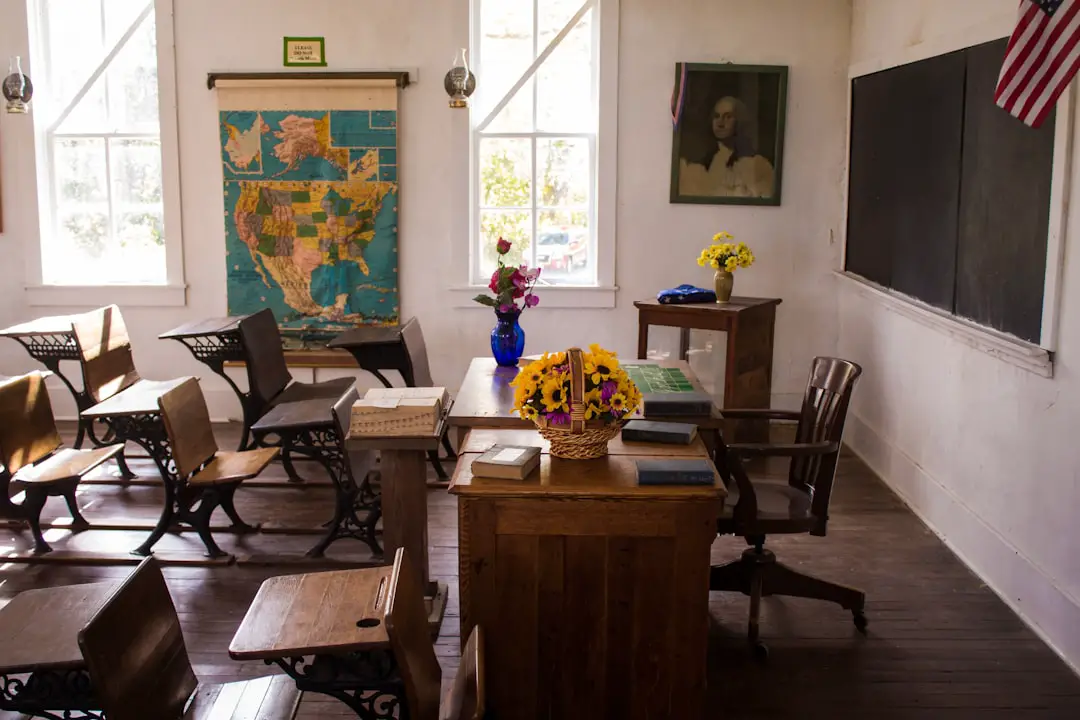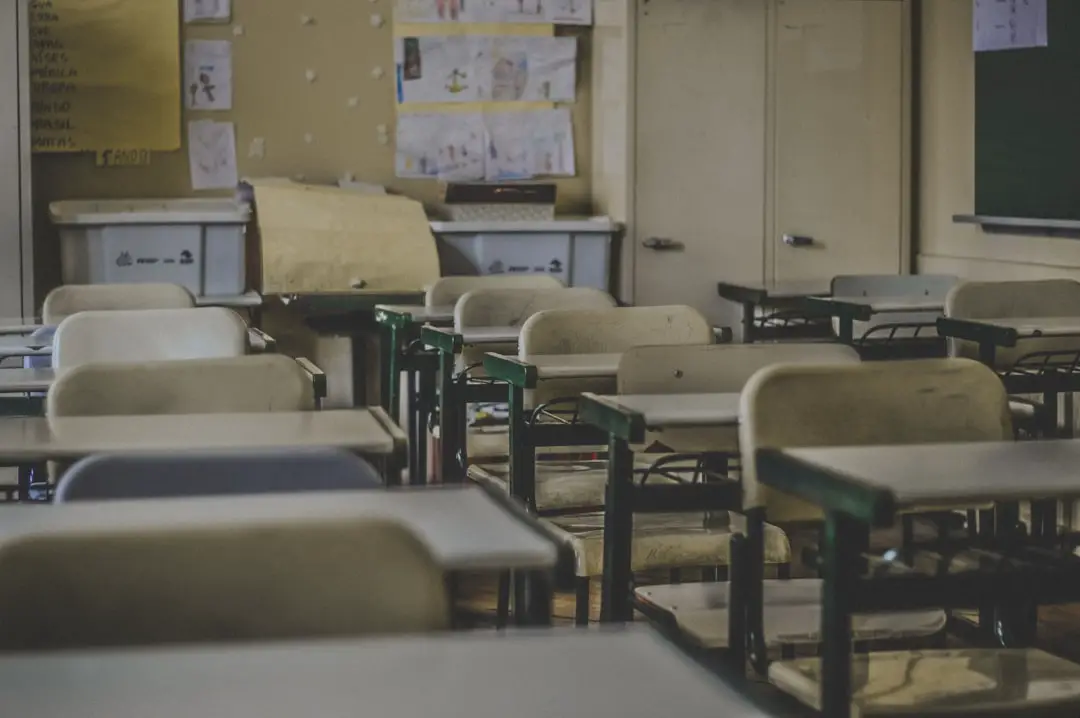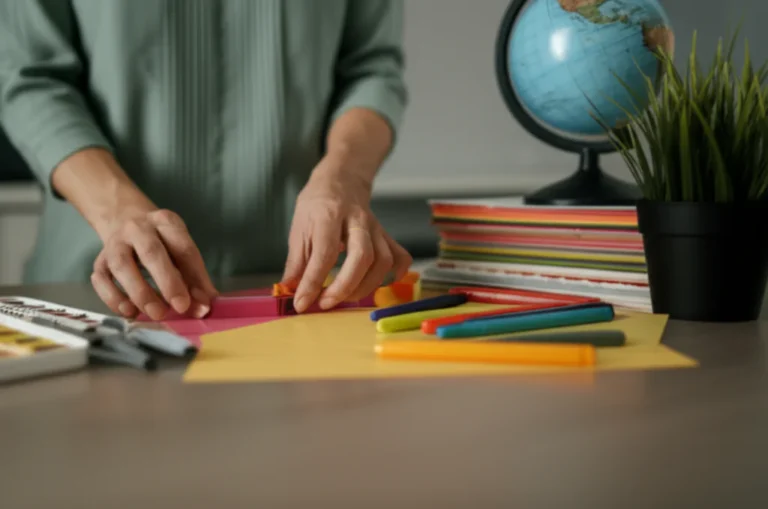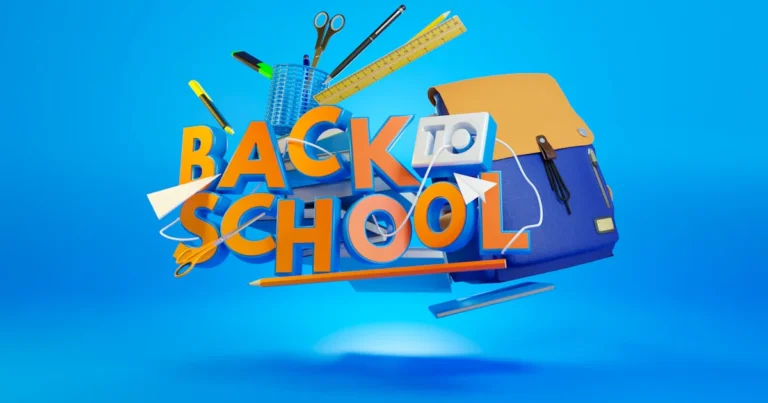Support our educational content for free when you purchase through links on our site. Learn more
Do Teachers Get a Classroom Budget? 7 Truths You Need to Know (2025) 🎒

Imagine walking into a classroom where the teacher has to buy everything—from pencils to books—with their own money. Sounds frustrating, right? Well, that’s the reality for most teachers across the U.S. Despite receiving some form of classroom budget, educators often find it woefully inadequate, spending hundreds of dollars out-of-pocket each year just to keep their classrooms running. But where does this budget come from? How much do teachers really get? And what clever hacks do they use to stretch every dollar?
In this article, we’ll uncover the 7 essential truths about classroom budgets in 2025, backed by real teacher stories, expert insights from Teacher Supply Store™, and practical tips to maximize your resources. Whether you’re a teacher, parent, or school administrator, understanding the classroom budget landscape is key to advocating for better funding and smarter spending. Ready to find out how teachers make the magic happen despite tight budgets? Let’s dive in!
Key Takeaways
- Most teachers receive a classroom budget, but it’s often less than $400 annually, covering only basic supplies.
- Teachers spend an average of $750 out-of-pocket each year to fill funding gaps.
- Classroom budgets come from multiple sources: district funds, grants, PTA/PTO, and community donations.
- Creative strategies like bulk buying, DIY projects, and crowdfunding help teachers stretch limited budgets.
- Adequate classroom funding directly impacts student engagement and success.
- Advocacy for increased budgets and flexible spending is crucial for sustainable classroom support.
Ready to stretch your classroom budget further? Explore our Classroom Supplies and Instructional Technology collections at Teacher Supply Store™ for budget-friendly, high-quality essentials!
Table of Contents
- Quick Tips and Facts About Classroom Budgets ✅
- The Real Deal: How Classroom Budgets Work for Teachers 💰
- Why Teachers Often Dip Into Their Own Pockets 💸
- 1. Top 10 Sources of Classroom Funding You Didn’t Know About 🏫
- 2. How School Districts Allocate Classroom Budgets: The Inside Scoop 🏛️
- 3. Creative Ways Teachers Stretch Their Classroom Budgets ✂️
- 4. The Impact of Classroom Budgets on Student Success 📚
- 5. Grants, Fundraisers, and Donations: Boosting Your Classroom Budget 💡
- Teacher Supply Store™ Picks: Best Budget-Friendly Classroom Supplies 🛒
- How Parents and Communities Influence Classroom Budgets 🤝
- The Future of Classroom Funding: Trends and Predictions 🔮
- Teacher Testimonials: Real Stories About Classroom Budgets 🎤
- How to Advocate for a Better Classroom Budget: A Teacher’s Guide 📢
- Conclusion: What Every Teacher Should Know About Classroom Budgets 🎯
- Recommended Links for Classroom Budget Resources 🔗
- FAQ: Your Burning Questions About Classroom Budgets Answered ❓
- Reference Links and Further Reading 📚
Quick Tips and Facts About Classroom Budgets ✅
Welcome to the whirlwind world of classroom budgets! If you’ve ever wondered, “Do teachers get a classroom budget?” — you’re in the right place. Spoiler alert: yes, but it’s complicated. At Teacher Supply Store™, we’ve chatted with hundreds of educators, and here’s the skinny:
- Most teachers receive some form of classroom budget, but it’s often less than $400 per year. (Source: EdWeek)
- Teachers spend an average of $750 out-of-pocket annually on supplies. That’s nearly double what districts provide! (Source: NEA)
- Budgets usually cover basic supplies like paper, pencils, and printer ink — but rarely extras like books, manipulatives, or tech.
- Many districts offer grants or special funds (e.g., Educational Enhancement Funds) that teachers can apply for.
- Teachers stretch their budgets creatively — think DIY projects, community donations, and savvy shopping.
If you want to dive deeper into how teachers get reimbursed for supplies, check out our detailed article Do Teachers Really Get Reimbursed for Supplies? 7 Insider Facts (2025) ✏️.
Stay tuned — we’re about to unpack everything you need to know about classroom budgets, from where the money comes from to how teachers make every penny count! 🎒
The Real Deal: How Classroom Budgets Work for Teachers 💰
What Exactly Is a Classroom Budget?
A classroom budget is a sum of money allocated by a school district, state, or sometimes a school itself, intended to cover the costs of supplies and materials teachers need for their classrooms. But here’s the catch: the amount varies wildly depending on location, grade level, and school funding.
Typical Budget Ranges
| Region/Type of School | Average Classroom Budget | Source |
|---|---|---|
| U.S. Public Schools (General) | $200 – $400 annually | EdWeek |
| Schools with EEF or Similar Funds | $300 – $600 annually | Edgeucating |
| Private Schools | Varies widely, sometimes none | Anecdotal reports |
What Does This Budget Cover?
- Basic supplies: pencils, paper, glue, markers
- Classroom essentials: printer ink, copier paper
- Sometimes: books, manipulatives, tech accessories
The Reality Check
Teachers often find these budgets insufficient for the full range of classroom needs. That’s why many educators end up spending their own money (more on that soon). The budget is a helpful starting point but rarely covers everything.
Why Teachers Often Dip Into Their Own Pockets 💸
The $750 Out-of-Pocket Reality
According to the National Education Association (NEA), 94% of teachers spend their own money on classroom supplies, averaging around $750 per year. Some spend even more — up to $2,400 annually!
What Are Teachers Buying?
- Paper, pencils, markers, glue
- Online subscriptions for learning programs
- Lab equipment and science supplies
- Snacks and hygiene products (tissues, hand soap)
- Incentive items and classroom decorations
- Clothing and essentials for students in need
Inflation and Pay Cuts Make It Worse
- School supply prices have increased by nearly 24% recently.
- Teacher pay has declined by an estimated 6.4% over the past decade.
Personal Story from Our Team
One of our Teacher Supply Store™ educators, Ms. Ramirez, shared:
“I get a $350 budget from my district, which covers basics like paper and pencils. But to create an engaging, hands-on learning environment, I spend at least double that from my own pocket every year. It’s a labor of love, but it can be exhausting.”
1. Top 10 Sources of Classroom Funding You Didn’t Know About 🏫
Teachers are resourceful! Beyond the official classroom budget, here are 10 sources teachers tap into:
| Source | Description | Control Over Spending |
|---|---|---|
| 1. District Classroom Budget | Official funds allocated yearly | ✅ Full control |
| 2. Educational Enhancement Funds (EEF) | State or district grants for supplies | ✅ Usually full control |
| 3. PTA/PTO Budgets | Parent-teacher organizations fund supplies | ✅ Shared control |
| 4. DonorsChoose | Crowdfunding platform for classroom projects | ✅ Full control |
| 5. Amazon Wish Lists | Teachers create lists for donations | ✅ Full control |
| 6. Local Business Sponsorships | Donations or discounts from businesses | ✅ Varies |
| 7. School Fundraisers | Events to raise money for supplies | ✅ Shared control |
| 8. Grants (e.g., NEA, local foundations) | Competitive funding for innovative projects | ✅ Full control |
| 9. Community Donations | Gifts from families or community members | ✅ Full control |
| 10. Personal Funds | Teachers’ own money | ❌ Not ideal but common |
Teachers often combine several sources to maximize their classroom resources.
2. How School Districts Allocate Classroom Budgets: The Inside Scoop 🏛️
The Budget-Making Process
School districts typically allocate funds based on:
- School enrollment numbers
- Grade levels (elementary vs. high school)
- Special program needs (e.g., STEM, special education)
- Historical spending patterns
Who Decides?
- District finance officers and school boards set budgets.
- Principals often have some discretion on distribution.
- Teachers may receive a fixed amount or submit supply requests.
Limitations and Challenges
- Budgets are often tight due to overall school funding constraints.
- Some districts prioritize technology over consumables.
- Equity issues arise when some schools get more funding than others.
Anecdote from a Principal
Mr. Lee, a middle school principal, told us:
“We try to allocate budgets fairly, but with limited funds, sometimes teachers have to get creative or seek outside help.”
3. Creative Ways Teachers Stretch Their Classroom Budgets ✂️
Teachers are masters of budget stretching! Here’s how they do it:
DIY and Upcycling
- Repurposing household items for classroom projects
- Creating manipulatives from recycled materials
Bulk Buying and Sharing
- Pooling resources with other teachers for bulk discounts
- Sharing supplies across classrooms or grade levels
Leveraging Technology
- Using free or low-cost digital resources (Google Slides, EdPuzzle)
- Applying for tech grants or donations
Community Engagement
- Hosting supply drives with parents and local businesses
- Utilizing DonorsChoose and Amazon Wish Lists effectively
Prioritizing Versatile Supplies
- Buying open-ended materials like construction paper, markers, and storage bins that serve multiple purposes
4. The Impact of Classroom Budgets on Student Success 📚
Why Budget Size Matters
Research shows that adequate classroom supplies directly affect student engagement and achievement. When teachers have the resources they need:
- Students complete assignments on time and with quality materials.
- Teachers can implement hands-on, interactive lessons.
- Classroom environments become more stimulating and inclusive.
Case Study: The $3,000 Classroom Budget Proposal
Thomas Courtney, a 5th-grade teacher, proposed a $3,000 annual budget per classroom in EdWeek, breaking it down as:
| Category | Amount | Purpose |
|---|---|---|
| Books | $600 | Student-selected reading materials |
| Basic Supplies | $600 | Glue, paper, pencils, markers |
| Physical & Social Equipment | $600 | Sports gear, garden supplies |
| Curriculum | $600 | Tailored materials, science kits |
| Incentives & Events | $600 | Prizes, family events |
This budget would empower teachers to create engaging, student-centered classrooms.
5. Grants, Fundraisers, and Donations: Boosting Your Classroom Budget 💡
Applying for Grants
- Many organizations offer grants for classroom supplies and projects.
- Examples: NEA Foundation Grants, DonorsChoose, local education foundations.
- Tip: Write clear, student-focused proposals highlighting impact.
Fundraising Ideas
- Bake sales, read-a-thons, and fun runs
- Crowdfunding campaigns via DonorsChoose or GoFundMe
- Partnering with local businesses for sponsorships
Maximizing Donations
- Create and share Amazon Wish Lists with parents and community.
- Use social media to promote needs and successes.
- Engage PTA/PTO groups to support classroom funding.
Teacher Supply Store™ Picks: Best Budget-Friendly Classroom Supplies 🛒
We’ve rated some of the top classroom essentials that stretch your budget without sacrificing quality.
| Product | Design (1-10) | Functionality (1-10) | Durability (1-10) | Versatility (1-10) | Overall (1-10) |
|---|---|---|---|---|---|
| Crayola Classic Markers (Pack of 10) | 9 | 10 | 8 | 9 | 9 |
| Elmer’s Washable School Glue (4 oz) | 8 | 9 | 9 | 8 | 8.5 |
| Fiskars Kids Scissors | 8 | 9 | 9 | 7 | 8.25 |
| AmazonBasics Copy Paper (500 sheets) | 7 | 10 | 8 | 8 | 8.25 |
| Post-it Notes (3×3, 100 sheets) | 9 | 9 | 7 | 10 | 8.75 |
Why These?
- Crayola Markers: Vibrant colors, non-toxic, long-lasting.
- Elmer’s Glue: Easy to clean, safe for kids, multi-purpose.
- Fiskars Scissors: Ergonomic, safe for young hands.
- AmazonBasics Paper: Reliable quality, multipurpose.
- Post-it Notes: Perfect for interactive lessons and reminders.
👉 CHECK PRICE on:
- Crayola Markers: Amazon | Walmart
- Elmer’s Glue: Amazon | Walmart
- Fiskars Scissors: Amazon | Walmart
- AmazonBasics Copy Paper: Amazon
- Post-it Notes: Amazon | Walmart
For more budget-friendly classroom supplies, visit our Classroom Supplies category.
How Parents and Communities Influence Classroom Budgets 🤝
The Power of Parent Involvement
Parents often supplement classroom budgets by:
- Donating supplies directly
- Organizing supply drives
- Contributing to PTA/PTO fundraising efforts
Community Partnerships
- Local businesses sometimes sponsor classrooms or provide discounts.
- Libraries, museums, and nonprofits offer free or discounted educational materials.
Building Relationships
Teachers who cultivate strong community ties often find their classrooms better equipped and supported.
The Future of Classroom Funding: Trends and Predictions 🔮
Increased Advocacy for Higher Budgets
- Movements like the NEA’s push for increased direct funding to teachers.
- Proposals for $3,000+ classroom budgets per teacher gaining traction.
Technology Integration
- More funds directed toward instructional technology (see our Instructional Technology category).
- Grants specifically for STEM and STEAM resources.
Equity-Focused Funding
- Efforts to close the gap between well-funded and underfunded schools.
- Targeted budgets for schools serving high-need populations.
Potential Challenges
- Economic downturns may tighten school budgets.
- Inflation continues to impact supply costs.
Teacher Testimonials: Real Stories About Classroom Budgets 🎤
Ms. Johnson, 3rd Grade Teacher
“Our district gives us $350 a year, which barely covers basics. I spend about $600 more out-of-pocket, mostly on books and manipulatives. I’ve learned to stretch every dollar by buying in bulk and using DonorsChoose.”
Mr. Patel, High School Science Teacher
“I’m lucky to get a $500 budget, but science supplies are expensive. I apply for grants and run fundraisers to afford lab materials. Without these, hands-on experiments wouldn’t be possible.”
Ms. Nguyen, Kindergarten Teacher
“I rely heavily on community donations and my Amazon Wish List. The budget helps with essentials, but creative supplies and sensory tools come from other sources.”
How to Advocate for a Better Classroom Budget: A Teacher’s Guide 📢
Step 1: Document Your Needs
- Keep a detailed list of supplies and costs.
- Track out-of-pocket spending.
Step 2: Communicate with Administrators
- Share your documented needs and how additional funds would improve learning.
- Propose a reasonable budget increase based on data.
Step 3: Engage Parents and Community
- Build support through PTA/PTO meetings.
- Highlight the impact of funding on student success.
Step 4: Leverage Professional Organizations
- Join teacher unions or advocacy groups.
- Participate in campaigns for better classroom funding.
Step 5: Use Social Media and Public Forums
- Share stories and successes.
- Raise awareness about the funding gap.
You’re now armed with the ultimate guide on classroom budgets! Ready to explore the final sections? We’ll wrap up with a powerful conclusion, handy recommended links, FAQs, and trusted references to keep you informed and empowered. Stay tuned!
Conclusion: What Every Teacher Should Know About Classroom Budgets 🎯

After unpacking the ins and outs of classroom budgets, one thing is crystal clear: while most teachers do receive some funding, it’s often not nearly enough to cover the full spectrum of classroom needs. The typical district budget—hovering around $200 to $400 annually—covers basics like paper and pencils but leaves out the fun, engaging, and sometimes essential extras that truly enrich learning.
Teachers, the true superheroes of education, often fill this gap with their own money, spending an average of $750 or more each year. But it’s not just about spending more—it’s about spending smart. From savvy bulk buying to leveraging grants, fundraisers, and community support, teachers stretch every dollar to create vibrant, effective learning environments.
We hope this guide has demystified the classroom budget landscape and empowered you with practical strategies and insights. Remember Ms. Ramirez’s story? That $350 budget was just the starting point—her creativity and community connections made the magic happen. That’s the heart of it: classroom budgets are a foundation, but teacher ingenuity builds the classroom.
If you’re a teacher, administrator, or parent, advocating for increased and flexible classroom funding is crucial. The proposed $3,000 budget model by educators like Thomas Courtney is a game-changer worth pushing for. Until then, use the tips and resources here to maximize what you have.
Ready to shop smart and save? Check out our recommended supplies and resources below to get started!
Recommended Links for Classroom Budget Resources 🔗
👉 Shop Budget-Friendly Classroom Supplies:
- Crayola Classic Markers (Pack of 10): Amazon | Walmart
- Elmer’s Washable School Glue (4 oz): Amazon | Walmart
- Fiskars Kids Scissors: Amazon | Walmart
- AmazonBasics Copy Paper (500 sheets): Amazon
- Post-it Notes (3×3, 100 sheets): Amazon | Walmart
Recommended Books on Classroom Budgeting and Teacher Advocacy:
- The Teacher’s Guide to Classroom Management by Tonya Ward Singer — Amazon
- Funding Your Classroom: A Teacher’s Guide to Grants and Fundraising by Lisa M. Johnson — Amazon
- The Innovator’s Mindset by George Couros — Amazon
FAQ: Your Burning Questions About Classroom Budgets Answered ❓

How do teachers typically allocate their classroom budget for supplies and materials?
Teachers usually prioritize basic consumables first—things like paper, pencils, glue, and printer ink—because these are essential for daily classroom functioning. After covering these, many try to allocate funds toward engaging learning materials such as books, manipulatives, and hands-on kits that support curriculum goals. Some teachers also set aside part of their budget for student incentives or classroom decorations that foster a positive learning environment.
Additional Insight: Balancing Essentials and Enrichment
Teachers often face tough choices balancing necessities with enrichment. For example, a teacher might spend $150 on paper and pencils but only $50 on science kits, depending on the budget size. This juggling act is why many educators seek additional funding sources.
What are the most essential learning materials that teachers should prioritize in their classroom budget?
The essentials vary by grade and subject, but generally include:
- Writing and drawing supplies: pencils, markers, crayons
- Paper products: copy paper, construction paper, notebooks
- Adhesives: glue sticks, liquid glue, tape
- Organizational tools: folders, bins, labels
- Basic manipulatives: counting blocks, shapes, math tools
- Books and reading materials: especially those that reflect student interests and diversity
Prioritizing versatile, multi-use items that can be adapted for various lessons helps maximize budget impact.
Can teachers use their classroom budget to purchase technology and digital resources for their students?
Yes, but with caveats. Many districts allow classroom budgets to cover technology accessories like headphones, charging cables, or educational software subscriptions. However, major tech purchases (tablets, laptops, interactive whiteboards) typically come from separate technology budgets or grants.
Tips for Teachers:
- Check your district’s guidelines before purchasing tech.
- Consider applying for technology-specific grants.
- Use free or low-cost digital tools (Google Classroom, EdPuzzle) to supplement tech needs.
Are there any restrictions or guidelines that teachers must follow when using their classroom budget to purchase supplies and materials?
Yes, restrictions vary by district and funding source but often include:
- Approved vendor lists: Some districts require purchases from specific suppliers.
- Spending caps: Limits on how much can be spent on certain categories.
- Documentation: Receipts and itemized lists must be submitted for reimbursement.
- Purpose restrictions: Funds must be used for classroom-related items, not personal use.
Teachers should always review their district’s policies and keep detailed records to ensure compliance.
How can teachers effectively advocate for increased classroom budgets?
Advocacy involves:
- Collecting data on current spending and needs.
- Communicating clearly with school leaders and boards.
- Engaging parents and community stakeholders.
- Joining professional organizations and unions.
- Sharing success stories and challenges publicly.
Effective advocacy combines facts with personal stories to make a compelling case.
Read more about “How Do Teachers Get Supplies? 10 Creative Ways to Equip Your Classroom! ✏️”
Reference Links and Further Reading 📚
- Why Are Educators Still Buying Their Own School Supplies? | NEA
- EdWeek Opinion: Teachers Need More Money for the Classroom
- Educational Enhancement Funds Overview
- Crayola Official Website
- Elmer’s Official Website
- Fiskars Official Website
- DonorsChoose
- Teacher Supply Store™ Classroom Supplies
- Teacher Supply Store™ Instructional Technology
Thanks for sticking with us! Now you’re ready to navigate classroom budgets like a pro and make every dollar count for your students. 🎉



